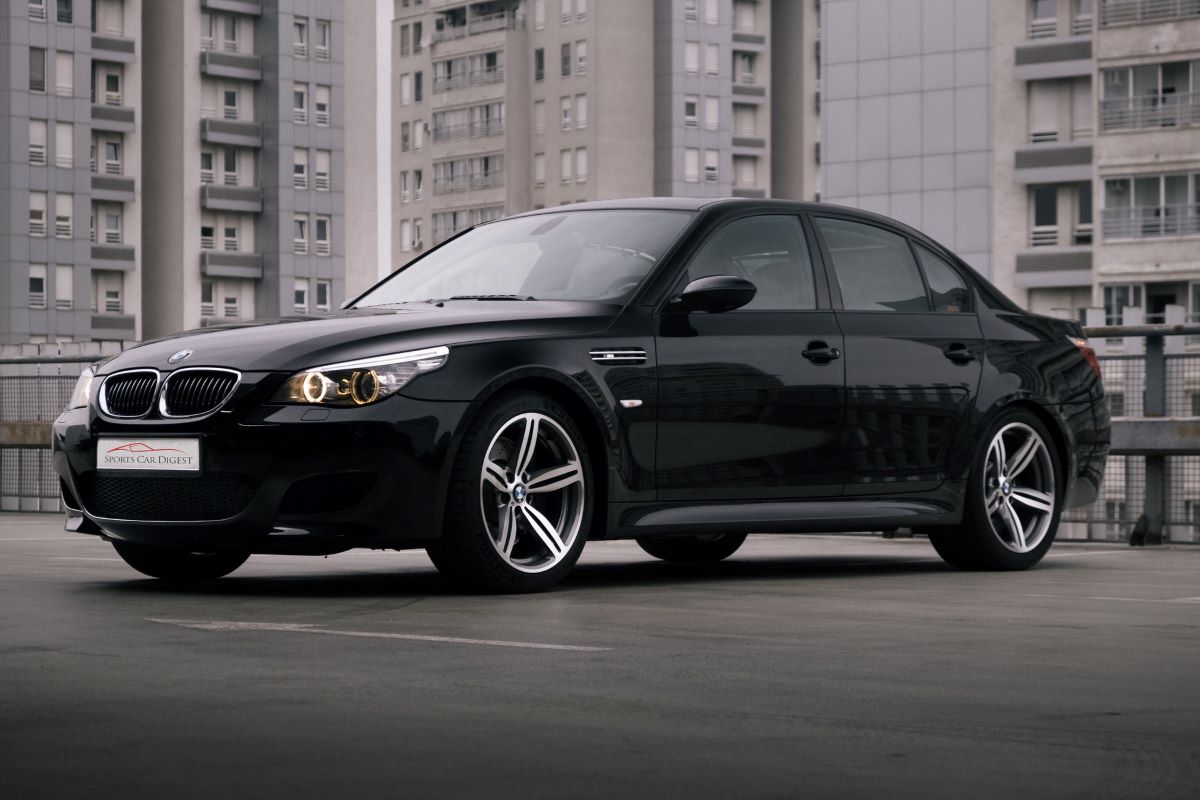In the world of high-performance sedans, most enthusiasts expect a formula: a powerful turbocharged engine under the hood, rear-wheel or all-wheel drive, and the kind of poised, sophisticated aggression that blends into a valet line or a business park.
But every now and then, a manufacturer breaks ranks and does something completely unhinged—an engineering flex so radical that it doesn’t just rewrite expectations; it sets a whole new standard for absurdity and brilliance. That’s precisely what BMW did in the mid-2000s with the creation of the E60 M5, a car that caught everyone off guard.
It didn’t have a twin-turbo V8 or a modest inline-six. No, this executive bruiser came armed with a high-revving, naturally aspirated V10 derived from Formula 1 influence. And it didn’t just hum—it screamed. Loudly. All the way to an 8,250 RPM redline.
Nobody saw it coming. BMW’s M division, known for the delicate precision of the E39 M5 and the razor-sharp edge of the E46 M3, suddenly dropped a ten-cylinder, 500-horsepower bombshell into an executive sedan and said, “Good luck.”
Even more shocking was the transmission: a clunky but advanced 7-speed SMG (Sequential Manual Gearbox) that promised race-car speed with everyday usability but often delivered whiplash shifts and confusing behavior.
Designed by the always-controversial Chris Bangle, the E60’s sharp creases and “flame surfacing” made it one of the most polarizing BMWs ever sold. It didn’t look like a monster. It didn’t drive like its peers. But once it woke up, it became one of the most exhilarating and bizarre sports sedans ever built.
And that’s the heart of this story: the contradiction. This was a four-door luxury sedan designed to go toe-to-toe with Lamborghinis on the Autobahn, while still carrying your kids to school and making your morning coffee run. It was packed with early-2000s tech—some brilliant, some maddening—and an engine that no sane boardroom would green-light today.
It was ahead of its time, behind in execution, and unlike anything before or since. Welcome to the legend, the headache, and the unrepeatable madness of the BMW E60 M5—the bizarre V10 sports sedan nobody saw coming.
Also Read: 5 Cars With Fast Touchscreens and 5 That Lag Like Old Phones
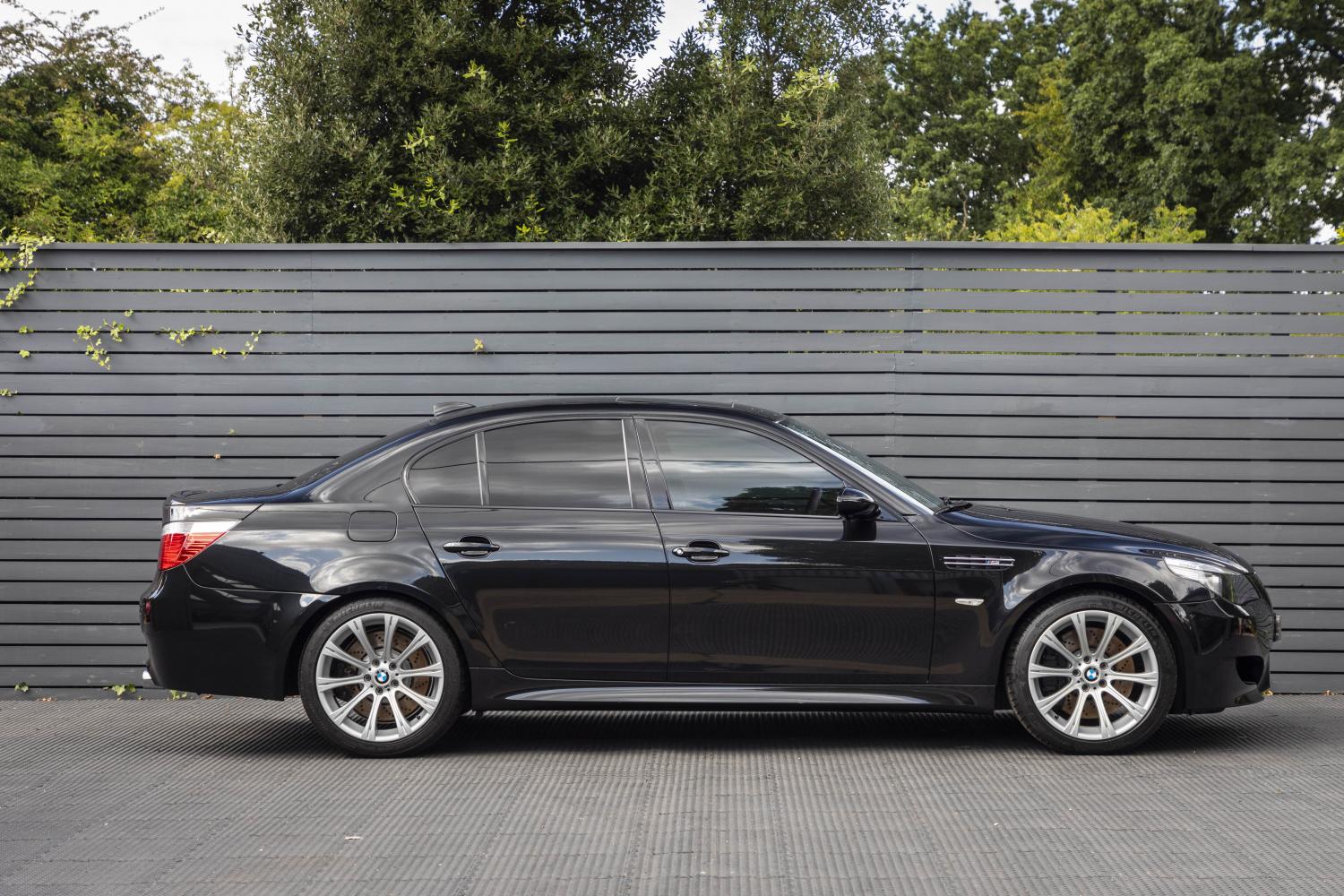
The V10 Nobody Asked For
When BMW revealed that the next M5 would come equipped with a naturally aspirated 5.0-liter V10, jaws dropped across the automotive community. This wasn’t some bored-out V8, nor was it a softened race engine masquerading in street clothes.
It was a bespoke powerplant known internally as the S85, a screaming, high-strung masterpiece producing 500 horsepower and 384 lb-ft of torque. The redline? A dizzying 8,250 RPM.
It was a high-compression, high-maintenance symphony of engineering excess—a love letter to the short-lived V10 era of Formula 1, when BMW was still competing with teams like Williams on the world stage. The fact that this engine ended up in a luxury sedan was both insane and brilliant.
The performance numbers were staggering. The E60 M5 could sprint from 0 to 60 mph in just 4.1 seconds, an incredible feat for a four-door car that weighed over 4,000 pounds. But numbers only told part of the story. The real magic happened at high RPM.
Below 4,000 RPM, the engine was almost docile—pleasant, composed, even a bit lazy. But keep your foot in it, and the S85 transformed the M5 into a snarling animal, a car that didn’t just accelerate—it exploded forward with mechanical rage.
The sound was otherworldly: metallic, high-pitched, and absolutely addicting. No turbocharger muffling the fury, no fake exhaust note piped in—just a raw, unfiltered mechanical soundtrack.
BMW could have chosen a safer route. A twin-turbo V8 or a reworked inline-six would have done the job. But that wasn’t the point. The M5’s V10 existed because it could—because engineers were still running the show back then. It was overkill in the best possible way, a decision made with passion, not spreadsheets.
And that’s what makes the S85 engine both so loved and so feared today. It demanded respect, required maintenance, and punished those who treated it like a normal engine. But for those who understood it, nothing else came close.

2. The Infamous SMG Transmission
If the V10 was the crown jewel of the E60 M5, then the SMG III transmission was its most controversial accessory. On paper, the 7-speed Sequential Manual Gearbox was supposed to be a marvel—a clutchless manual that used hydraulic actuators to deliver rapid, race-style shifts faster than any human could dream of.
There was no clutch pedal, but it wasn’t an automatic either. Instead, drivers had to use paddle shifters or the gear lever to swap cogs, often accompanied by violent lurches, indecisive downshifts, and moments of confusion that bordered on comedy. It was a brilliant idea marred by clunky execution, and it polarized owners from day one.
Around town, the SMG was often frustrating. At low speeds, it didn’t know whether to coast or crawl, and stop-and-go traffic became a jerky ordeal. The software tried its best, with different shift modes ranging from “soft” to “aggressive,” but none could fully mask the fact that this wasn’t a conventional transmission.
However, when driven hard, when you let the V10 sing and clicked through gears like a racing driver—the SMG came alive. Shifts were lightning-quick, and the car felt like a true sports machine. It wasn’t smooth, but it was fast. And for some, that rawness was part of the appeal.
Unfortunately, many buyers weren’t looking for that kind of experience. They wanted the best of both worlds: supercar power and luxury sedan comfort. The SMG offered neither reliably. Maintenance was also a nightmare. Clutch actuators failed. Pump motors wore out. Sensors threw codes.
It was, in many ways, a time bomb—one that terrified secondhand buyers and mechanics alike. Some owners later opted for costly manual swaps, particularly in the U.S., where a 6-speed manual was offered as a consolation. But the damage was done. The SMG became a symbol of the M5’s brilliant ambition—and its equally brilliant absurdity.
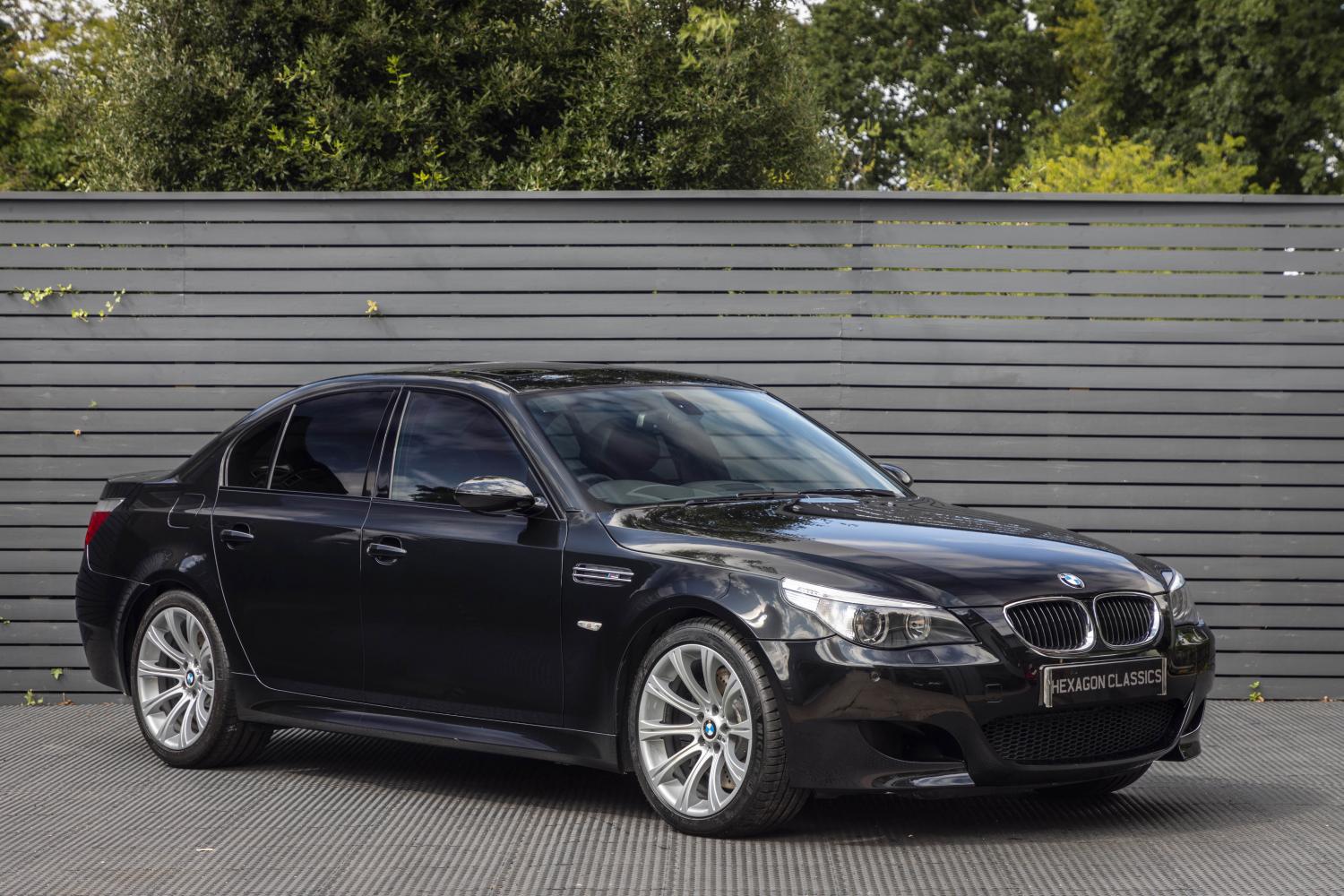
3. Styling from the Future—or the Past?
The E60’s styling was another point of contention. Designed during the controversial Chris Bangle era, the M5’s bodywork featured bold lines, flared wheel arches, a prominent “flame surfacing” treatment, and a rear end that many critics simply hated. It was a major departure from the elegant, timeless look of the E39 M5.
Where the previous M5 was muscular yet understated, the E60 was sharp, angular, and, to some eyes, awkward. But over time, many enthusiasts began to appreciate its unique character. It was different, yes—but it also looked fast, even standing still.
From the front, the E60 M5 had an undeniable presence. The quad headlights, slightly flared nostrils of the kidney grilles, and a purposeful bumper hinted at the power underneath. The hood bulged subtly, a nod to the beast it covered. Side profile revealed a clean, flowing design with aggressive lower sills and wider fenders.
Around back, however, the story was mixed. The trunk line was high, the taillights oddly shaped, and the proportions were… divisive. Still, the quad exhaust pipes and discreet M badging were tasteful touches, and to those in the know, this was a wolf in V10-powered clothing.
Inside, things were more consistent with BMW’s usual formula: driver-focused, tech-heavy, and slightly ahead of its time. The iDrive system, in its early and infamously frustrating form, made a lot of people angry. But beneath the learning curve was a sophisticated layout that offered real customization and control.
The M button on the steering wheel allowed drivers to instantly engage their preferred performance settings—throttle mapping, suspension stiffness, shift aggression—bringing the car to life at the push of a thumb. Leather, carbon trim, bolstered sport seats—this was an executive missile disguised as a business tool. Strange on the outside, but purposeful throughout.
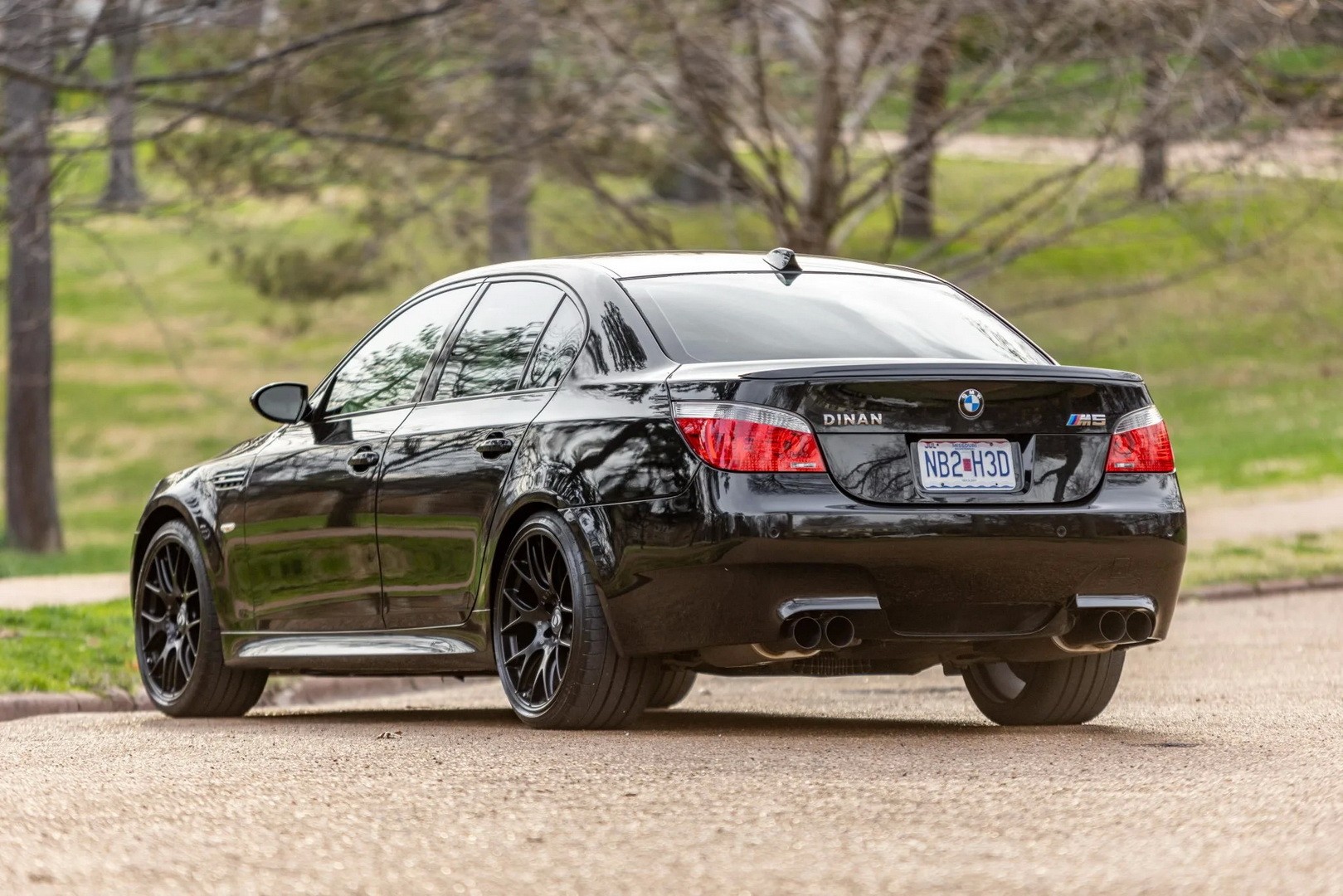
4. A Supercar in Sedan Clothing
Despite its quirks, the E60 M5 was a supercar trapped in the body of a sedan—and BMW knew it. The car’s performance metrics matched or exceeded many two-door exotics of the era. On the Autobahn, it could cruise at 180+ mph with the limiter removed, and on a racetrack, it could hang with vehicles costing twice as much.
The V10 sang, the chassis communicated, and the brakes bit hard enough to snap heads forward. It was intoxicating, outrageous, and surprisingly balanced when pushed to its limits. This wasn’t just a sedan with a fast engine—it was a true M car, tuned to dance at triple-digit speeds.
What made the M5 special wasn’t just its numbers—it was the emotion. The car had personality. It didn’t behave like a modern, polished machine. It was flawed, temperamental, and dramatic. The engine barked to life with urgency. The SMG punched shifts like it was angry.
The whole car vibrated with anticipation. It wasn’t sterile or easy to tame. It required engagement. It begged to be driven, hard and often. You didn’t just pilot an E60 M5—you wrestled it, learned it, and eventually came to respect it. And in return, it offered one of the most visceral driving experiences in sedan history.
Today, cars like this are unthinkable. Emissions regulations, efficiency demands, and changing consumer tastes have killed the naturally aspirated V10. Dual-clutch and automatic transmissions have eliminated the drama of a sequential box. Even BMW’s current M5, though devastatingly fast, lacks the unfiltered madness of its predecessor.
The E60 M5 was the last of its kind—a Hail Mary pass from the old BMW that still believed in engineering for excitement. A sedan with the soul of a race car, it was bizarre, brilliant, and unforgettable.
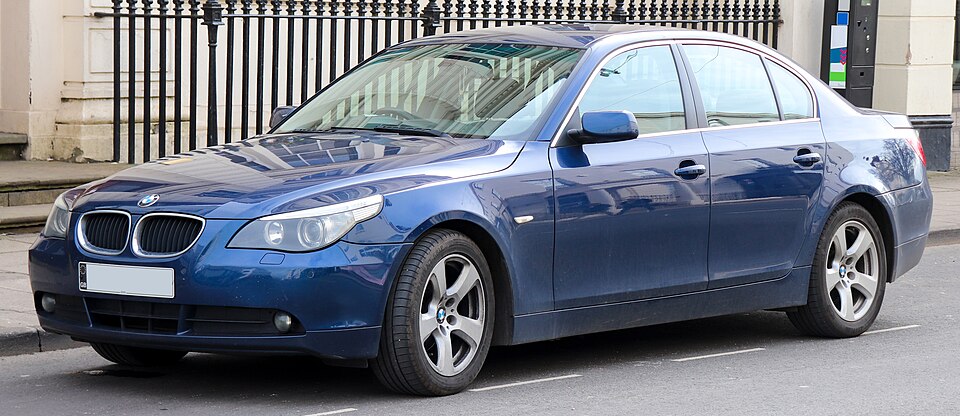
The Beautiful Madness of the V10 M5
The BMW E60 M5 was never meant to be subtle. It didn’t want to fit into a category, and it never asked for approval. Instead, it showed up with a Formula 1-inspired V10 engine, a brutal single-clutch gearbox, and styling that made design critics lose their minds—and dared you to try and understand it.
In a world where carmakers were already leaning into turbocharging and playing it safe, the E60 stood defiant. It wasn’t just built to perform; it was built to shock. And shock it did—owners, mechanics, and car journalists alike. The M5 wasn’t user-friendly. It wasn’t smooth. But for those who craved raw, unfiltered driving drama, it delivered a rush like nothing else in its class.
This car didn’t just rewrite the rulebook—it shredded it and lit it on fire. A naturally aspirated V10 in a luxury four-door? Madness. A race-style gearbox that barely functioned in traffic? Bolder still. And yet, somehow, all that insanity added up to brilliance.
Also Read: 10 Cars Still Running After a Million Miles That Prove Maintenance Matters
The E60 M5 wasn’t perfect. It was deeply flawed. But it was those flaws that gave it character. It was a machine that demanded skill, patience, and respect—and if you gave it that, it gave back in the most intoxicating ways. It wasn’t a car you simply owned. It was a car that tested you, challenged you, and, if you were lucky, rewarded you with moments of pure automotive ecstasy.
Today, the E60 M5 is often remembered in two ways: either as an over-engineered maintenance nightmare or as one of the greatest driver’s sedans ever built. Both are true. The cost of entry today might be low, but the cost of ownership is anything but.
Still, for purists and thrill-seekers, no modern M car can replicate what the E60 offered. It was too wild, too mechanical, too alive. It was a product of a brief, glorious time when engineers ran the asylum, and performance was pursued without compromise. And for that reason, it remains a legend—a bizarre, beautiful V10 beast that nobody saw coming, and that nobody will ever forget.

